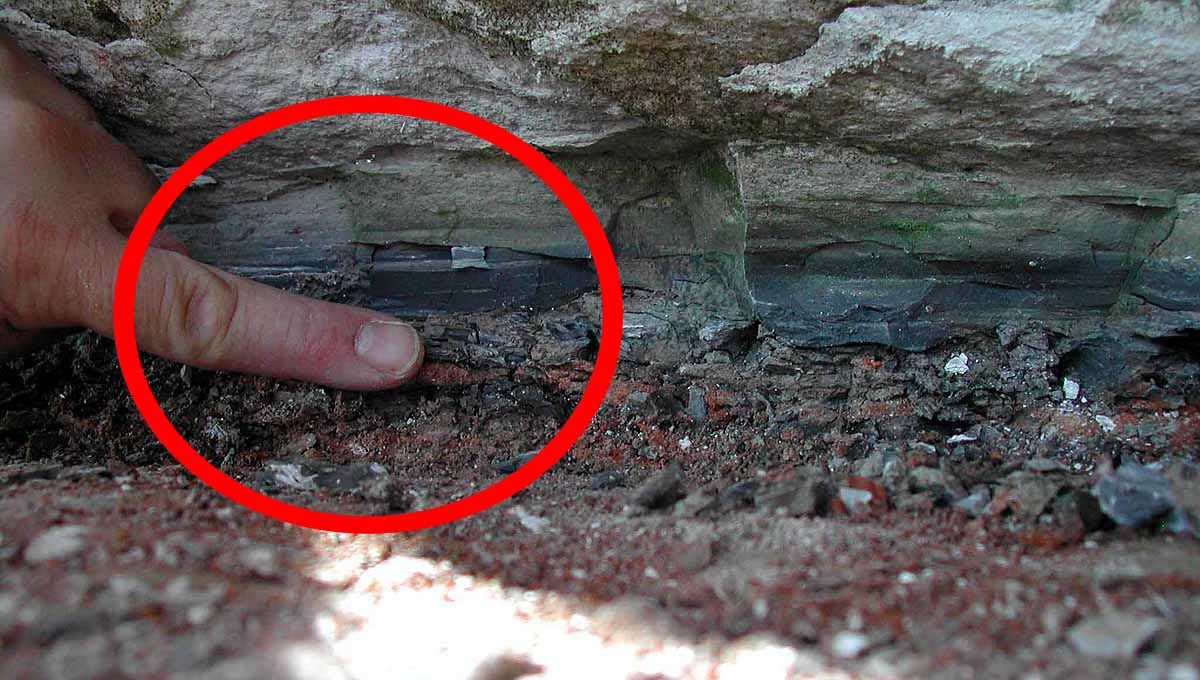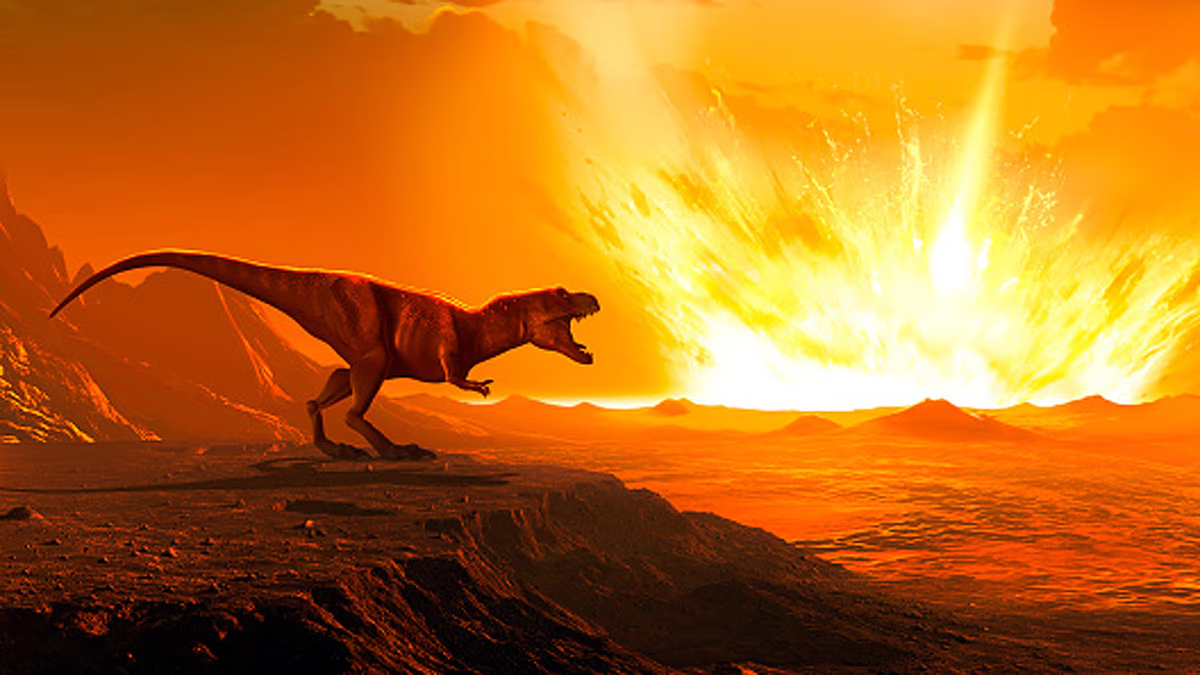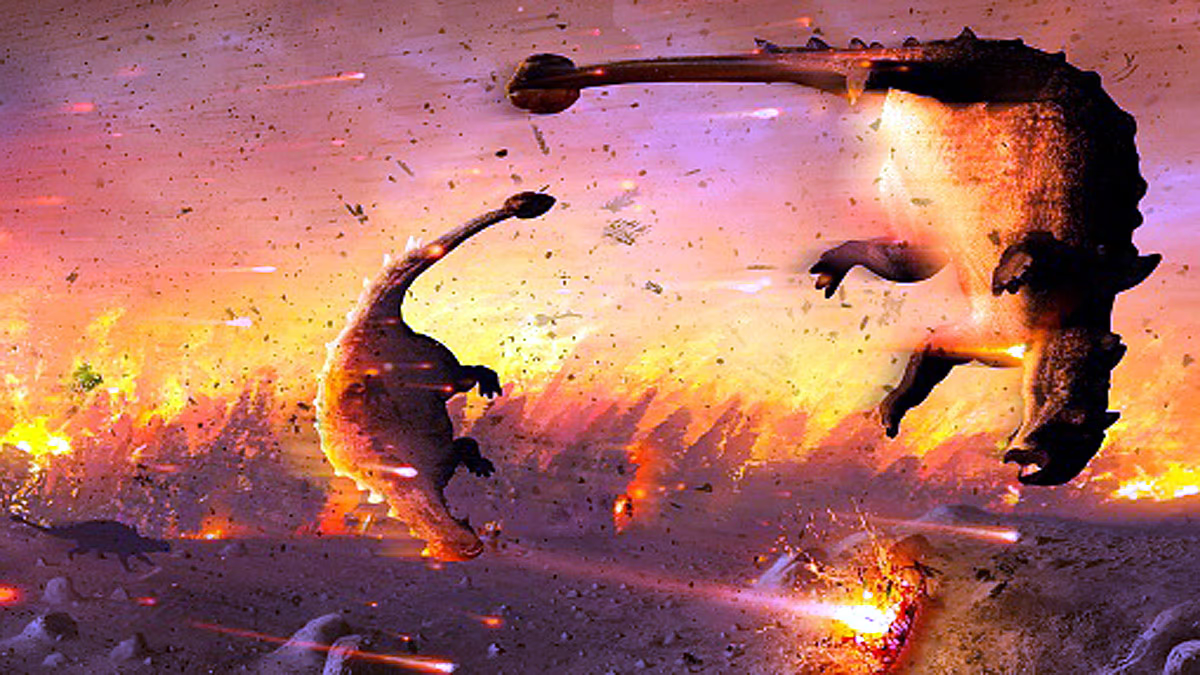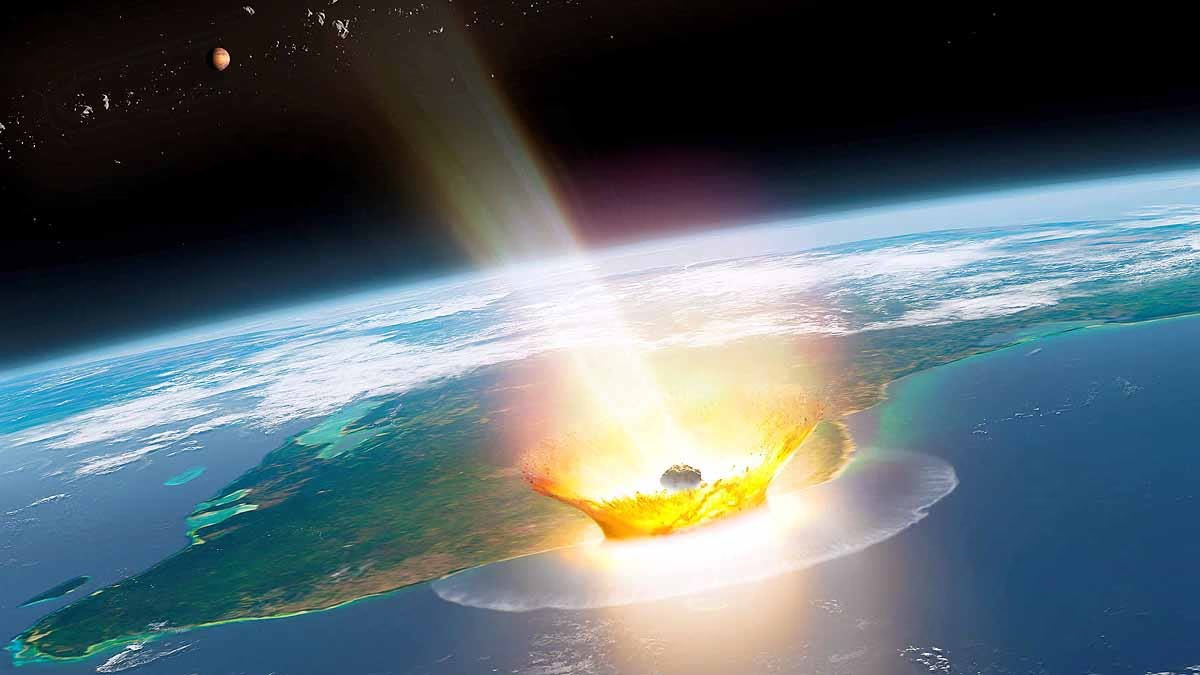The asteroid that caused the extinction of the dinosaurs came from far beyond the planet Jupiter. This revelation emerged from a recent study. The asteroid created a gigantic crater on the Yucatan Peninsula in Mexico approximately 66 million years ago, wiping out the entire dinosaur species.
Additionally, 75% of Earth's living beings were annihilated, creating an apocalyptic scenario. Debris sprawled across the world, tsunamis formed, and fires erupted. A recent study claims this asteroid came from beyond our solar system, far past Jupiter.
Also read: ISRO SSLV-D3 Launch: Historical Success, Nation Gets a New Operational Rocket

Source: aajtak
By studying ancient debris, scientists determined what the asteroid was made of. The asteroid was carbonaceous, known as C-type, indicating a high carbon content. This study was conducted by Mario Fischer-Godde and his team from the Geochemistry department at the University of Cologne in Germany.
The Asteroid Originated from Beyond the Solar System
Mario revealed that this asteroid did not resemble those within our solar system. It came from outside, leading to the demise of the dinosaurs. This study was published recently in the
journal. The collision signaled the end of the Cretaceous period, creating the Chicxulub Crater, which was not a minor one.
Also read: On Independence Day, Soldiers Drive Special Vehicle in Kutch… Wave the Flag, Learn About ATOR N1200

Source: aajtak
A 180 km Wide and 20 km Deep Crater Was Formed
The crater was 180 kilometers wide and 20 kilometers deep. Imagine the impact of a carbon-rich asteroid. The debris that was ejected has now settled as clay in various places, containing elements like iridium, Ruthenium, osmium, rhodium, platinum, and palladium.
Identification of the Asteroid Through Rare Metals
Ruthenium is rare on Earth but common in asteroids. Scientists paid special attention to Ruthenium and analyzed its content in the clay. There are seven isotopes of Ruthenium, three of which were found in the collision debris. These isotopes confirm that the colliding asteroid was rich in carbon.
Also read: Dr. Ram Narayanan Aggarwal, The Famous Scientist and Creator of Agni Missiles, Has Passed Away

Source: aajtak
Types of Asteroids
Asteroids rich in Ruthenium are less common in our solar system. The isotopes found suggest they came from an asteroid outside the solar system. C-type asteroids are the most ancient and common materials in the solar system. Following them are S-type asteroids filled with stones and M-type asteroids rich in rare metals.
C-type asteroids provide evidence of the early solar system. They originated outside the solar system and slowly some drifted inside. Typically, these asteroids orbit the asteroid belt between Mars and Jupiter, but the asteroid that caused the extinction of the dinosaurs came directly from outside the solar system.




